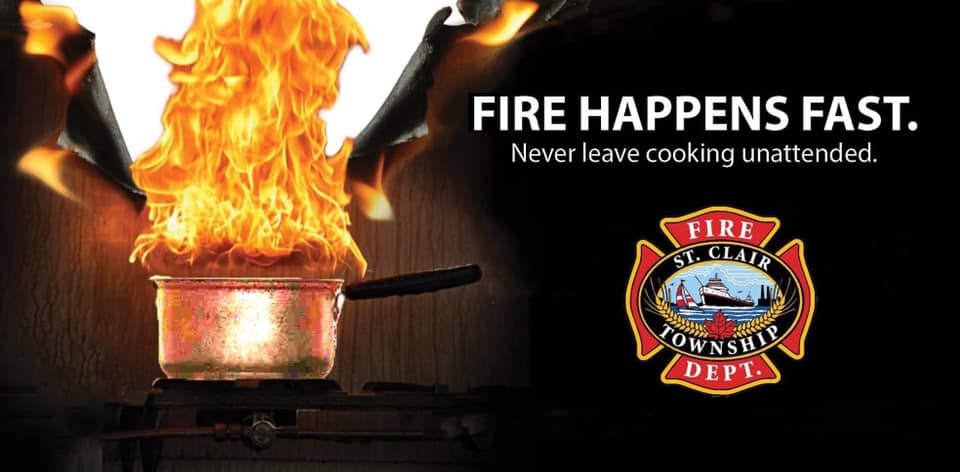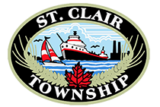
Fire Prevention & Safety
Every person is responsible for their own fire safety. It is everyone’s responsibility to implement and practice the three lines of defence against fire: Prevention, Detection, Escape.
Prevention – Check your home for fire hazards and eliminate them. Most home fires are still caused by careless cooking, smoking, and candle use.
Detection – Working smoke alarms are so important, it’s the law to have them on every storey of your home and outside sleeping areas. Remember: while installation and maintenance are mandated by the Ontario Fire Code, this code is the minimum standard. Have enough smoke alarms to provide your family with the early warning needed to escape from a fire
The Ontario Fire Code now requires every home that has a risk of carbon monoxide (CO) poisoning install a CO alarm outside of sleeping areas. You may require more than one CO alarm if you have family members/residents sleeping on different levels of your home.
Escape – If a fire occurred in your home tonight, would your family get out safely? Everyone must know what to do and where to go when the smoke alarm sounds. Take a few minutes with everyone in your household to make a home fire escape plan.
Find information and tips about how to protect your home, loved ones and property from the impacts of fire. Learn how to:
Find out how to stay safe and protect your loved ones from carbon monoxide.
Portable fire extinguishers have limited applications against small fires. When used properly, an extinguisher can save lives and property by putting out a small fire or containing it until firefighters arrive. Fire extinguishers do not replace the need to call the Fire Department. Always call 9-1-1 first when a fire occurs, no matter how small. Learn how to select, use and maintain fire extinguishers.
- Have your heating system and chimneys inspected and cleaned annually by a qualified service technician.
- Ensure all outside heating vents are not blocked.
- Ensure woodstoves, fireplaces and fireplace inserts are installed by a qualified technician according to manufacturer’s instructions.
- Always use a fire screen around the fireplace.
- Allow ashes from your woodstove or fireplace to cool before emptying them into a metal container with a tight-fitting lid. Keep the container outside.
- Check with the Building Department and obtain the necessary permits prior to installing a wood stove, fireplace insert, or chimney.
Automatic sprinkler systems have enjoyed an enviable record of protecting life and property for over 100 years. Statistics demonstrate that there has never been a multiple loss of life in a fully sprinklered building where the system operated as designed. Sprinklers are a cost-effective technology that provides for a high level of life safety. Residential fire sprinkler technology is proving both reliable and effective. Property losses are 85% less in residences with fire sprinklers compared to those without. As positive as this information is, there are still common misunderstandings about the operation and effectiveness of home fire sprinkler systems. Learn more about sprinkler systems.
If an emergency happens in your community, you need to be prepared! Emergency responders do a great job keeping people safe, but they can’t do it alone. Take action to prepare for the types of emergencies that could affect you where you live, work and visit. Learn more how to prepare you and your family for an emergency.
TAPP-C (The Arson Prevention Program for Children) is a program that brings together fire service and counseling professionals to help families deal effectively with children and teens involved in fire-play. The fire service professionals educate children and their families about fire and how to develop good fire safety practices. Counseling professionals assess the risk of continued fire involvement and help children and their families deal with problems that may contribute to the fire-setting. TAPP-C is available to children from 2 to 17 years of age.
For more information, please visit their website: www.tapp-c.ca
People, animals, and property are in danger when fire breaks out on the farm. Inspect your barn and outbuildings for fire hazards and have a fire safety plan to reduce the risk of tragic loss.
Barn Fire Safety Checklist (courtesy of the NFPA):
- Required safety equipment – fire extinguishers, smoke and carbon monoxide alarms, etc. – are present and in good working order.
- Heat lamps and space heaters are kept a safe distance from anything that can burn.
- Heaters are on a sturdy surface and cannot fall over.
- Electrical equipment is labeled for agricultural or commercial use.
- All wiring is free from damage.
- Extension cords are not used in the barn.
- Lightbulbs have covers to protect them from dust, moisture, and breakage.
- Damage is identified quickly and repairs are completed with safety in mind.
- Dust and cobwebs around electrical outlets and lights are removed.
- Oily rags are stored in a closed, metal container away from heat.
- Feed, hay, straw, and flammable liquids are stored away from the main barn.
- The barn is a smoke-free zone.
- Exits are clearly marked and pathways are clear.
- Fire drills are held frequently with everyone who uses the barn.
- Workers are trained to use fire extinguishers.
- Everyone in the barn knows personal safety is the first priority if a fire breaks out.
- Hazard checks take place on a set schedule.
For more information visit:
- Ten Ways to Reduce the Risk of Barn Fire (Government of Ontario)
- Reducing the Risk of Fire on Farm (Government of Ontario)
- Barn Fire Prevention (Equine Research, University of Guelph)
Property owners in St. Clair Township are required to follow the rules in the Open Air Burning By-Law
Apply for an Open Air Burn Permit
Every home in Ontario must have working smoke alarms installed. Smoke alarms are required on every storey and outside all sleeping areas. Building codes for new homes require the installation of smoke alarms in all bedrooms, this may include alarms with strobes.
All homes in Ontario that have an attached garage, fuel burning appliance or fireplace must have a working carbon monoxide alarm installed adjacent to all sleeping areas.
Homeowners
It is the responsibility of homeowners to install and maintain smoke alarms on every storey of their home and outside sleeping areas. When required, carbon monoxide alarms are required outside of all sleeping areas.
Landlords
It is the responsibility of landlords to ensure their rental properties comply with the law.
Tenants
If you are a tenant of a rental property and do not have the required number of smoke alarms, contact your landlord immediately. It is against the law for tenants to remove the batteries or tamper with the alarm in any way.
Failure to comply with the fire code smoke alarm requirement could result in Ontario Fire Code charges.
When installing smoke alarms, refer to the manufacturer’s instructions for information about correct placement.
Firefighters go door-to-door to make sure homes have working smoke and carbon monoxide alarms. Firefighters talk about fire safety information and make sure you have a fire escape plan for your home. Participation in the program is voluntary. If you would like us to visit your home, contact St. Clair Township Fire Department. You can learn more about fire public education programs on the fire safety and prevention section of the website.
Why participate in the program?
- Peace of mind that your home and family are protected by working smoke and carbon monoxide alarms as required by law.
- Meet firefighters from your neighbourhood fire station and ask safety questions.
- Learn how to stop fires from happening and what to do if there’s an emergency.
Is participation mandatory?
No participation is not mandatory.
Having working smoke and carbon monoxide alarms is mandatory (it’s the law). However, having a firefighter enter your home to complete an in-home assessment is completely voluntary.
What if I was not home and I missed the firefighters?
Sorry we missed you. Door hangers will be left with installation and maintenance requirements for smoke and carbon monoxide alarms.
Homeowners and tenants are encouraged conduct their own home safety assessment and if they have questions, they may be directed to fire prevention via email or telephone 519-481-0111.



